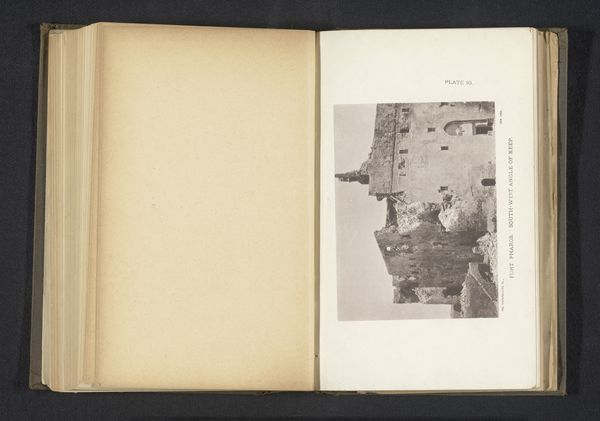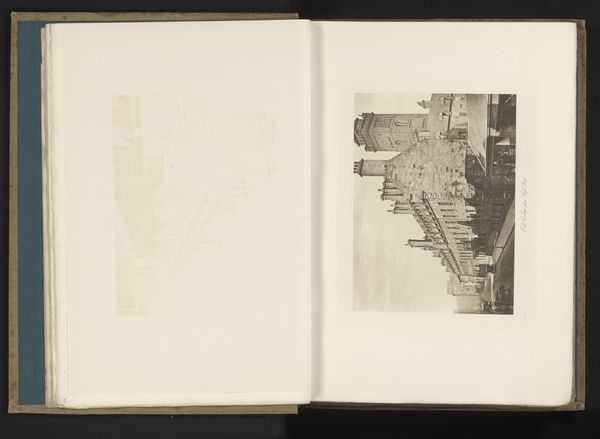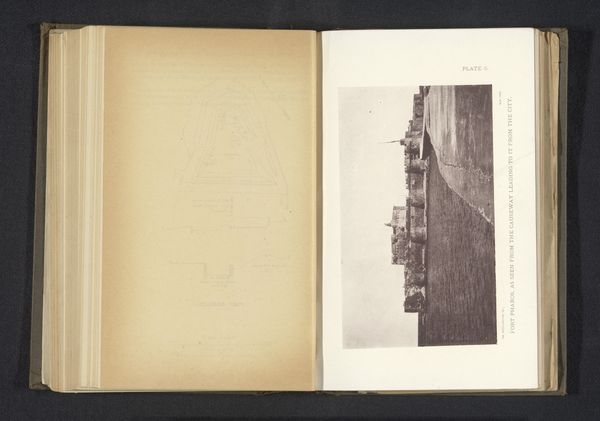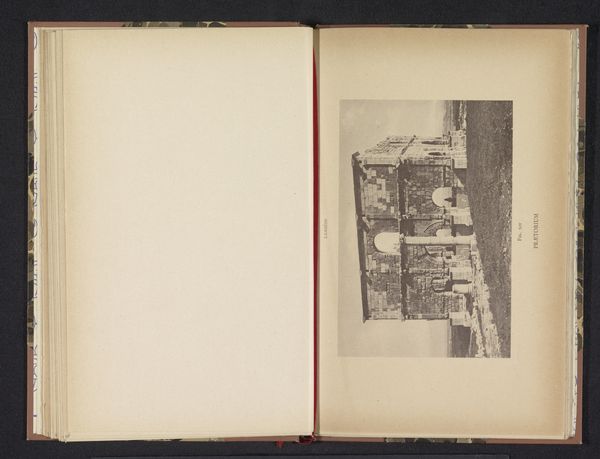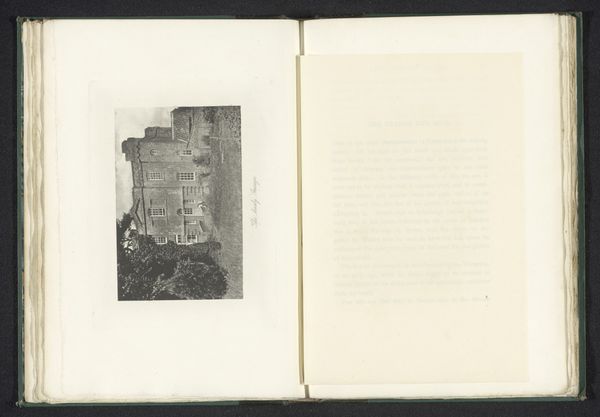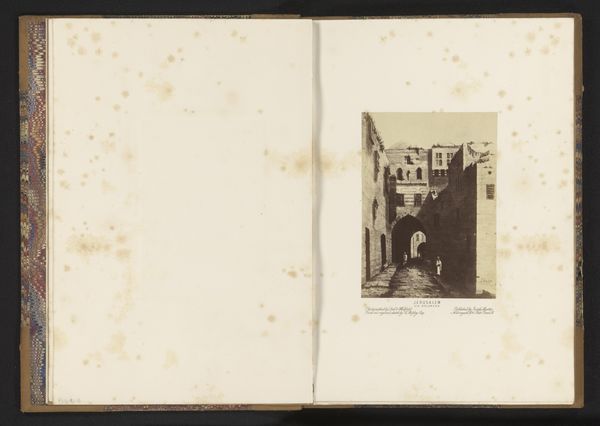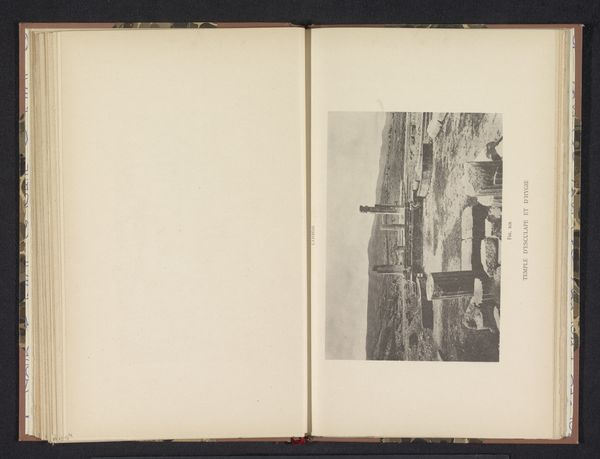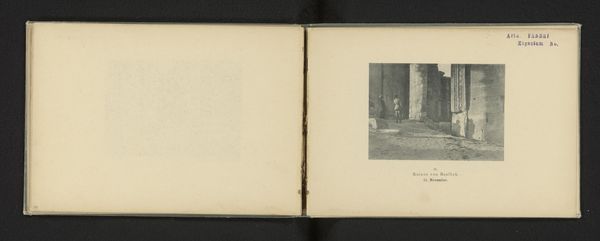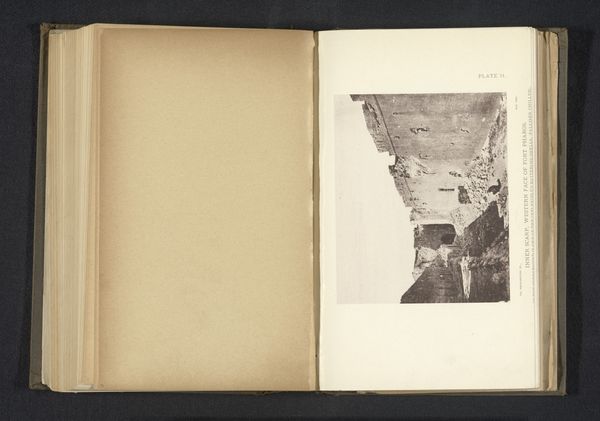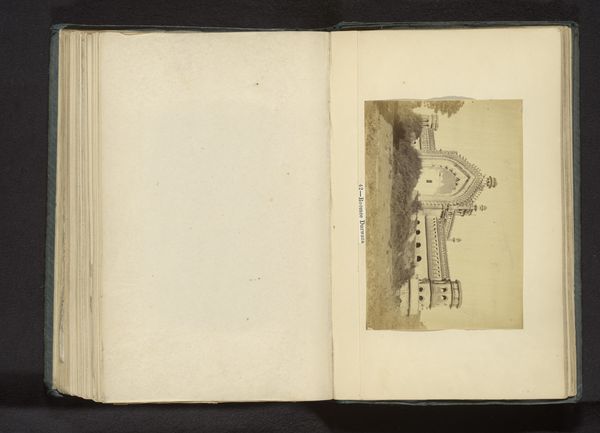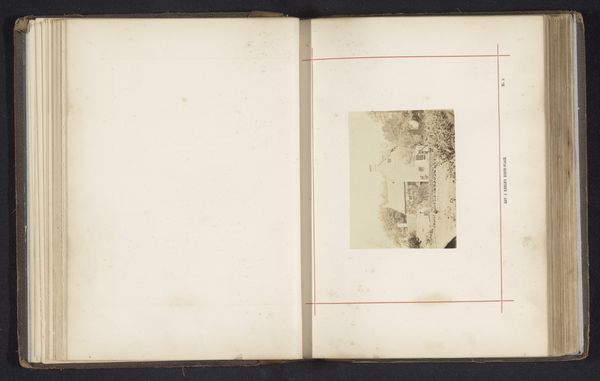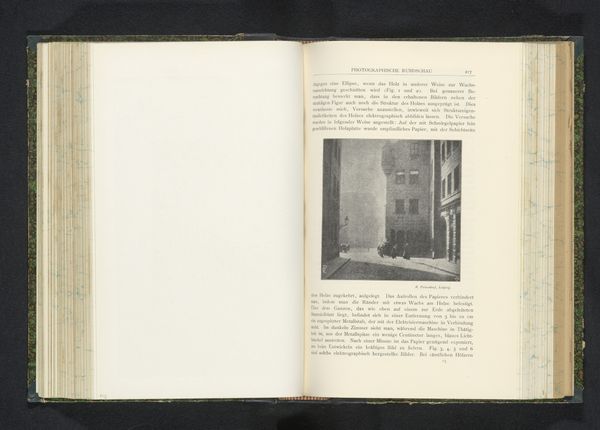
print, photography
#
aged paper
#
homemade paper
#
paperlike
# print
#
landscape
#
personal journal design
#
photography
#
hand-drawn typeface
#
ancient-mediterranean
#
thick font
#
cityscape
#
handwritten font
#
thin font
#
historical font
#
small font
Dimensions: height 99 mm, width 144 mm
Copyright: Rijks Museum: Open Domain
Curator: Here we have "Gezicht op het fort op Pharos met kanonnen," an image, likely a photographic print, dating to before 1885. It depicts a fort with cannons. It's presented within the leaves of what appears to be an aged journal or scrapbook. Editor: My initial impression is one of faded grandeur. The sepia tones and visible aging of the paper create a melancholic feel. The fort, rendered in shades of grey, looks solid yet crumbling, a juxtaposition that’s quite striking. The composition itself, the contrast between the stark white of the page surrounding the picture and the darkness of the cannons create a balanced asymmetrical feel. Curator: Indeed. The historical context is fascinating. Pharos, of course, was famous for its ancient lighthouse, one of the Seven Wonders of the Ancient World. This image likely represents a later fortification built near or on the site of the original lighthouse. The presence of cannons signifies the military and strategic importance of the location, perhaps as part of Ottoman or later colonial defenses. The way it’s included in what looks like a personal journal could be evidence of the photographer being part of the social elite. Editor: Absolutely. I also notice the rather dense texture created by the photography. There’s a clear, sharp detail within the stonework and weaponry. This makes the architecture itself almost feel like it is another texture of the earth and also makes the objects almost pop out of the landscape itself. Curator: We must also consider the socio-political dynamics. Such a scene suggests an empire, perhaps reflecting the control exerted in this strategic geographic region. And how that sense of power in older times compares with current social issues, allowing audiences to connect with current issues about geopolitical locations. Editor: Looking again, I'm drawn to the interplay between the architecture and those imposing cannons in the frame, creating a visual dynamic between defensiveness and dominance. The journal or sketchbook format underscores the artist's personal interpretation. Curator: Considering this work, what I keep coming back to is this: who created it and why? I suspect, perhaps, its meaning might lie more in the narrative embedded in its creation than in the mere visual depiction of this citadel. Editor: Ultimately, the appeal comes from how it lets viewers interpret a location’s function across the time. And more so, that this page can serve as the relic of its function through personal means such as record keeping, which can resonate for future audiences.
Comments
No comments
Be the first to comment and join the conversation on the ultimate creative platform.
